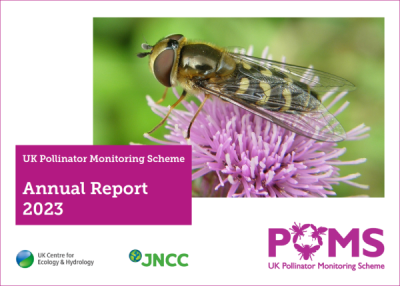News
This Bees Needs Week, we've looked at the benefits to promoting FIT Counts for local groups. FIT Counts are a great tool to use when working with volunteers: They are accessible; they start a conversation about pollinators; and they are benefit your mental wellbeing. Check out the full article at CJS Online for more details!
Today a new pollinator monitoring partnership agreement has been announced, between the Joint Nature Conservation Committee (JNCC) and UK Centre for Ecology and Hydrology (UKCEH). The details can be seen on the JNCC website
Thank you very much to everyone who completed the questionnaire in February and March 2022, carried out by Birdsong with funding from JNCC, and told us more about your experience with the UK PoMS citizen science project. We are delighted to have received 424 responses, and we are now able to share the results with you.
Following a successful pilot project in 2021, this year Northern Ireland has implemented both PoMS, surveys, enabling us to achieve full UK coverage. During National Insect Week in June 2022, volunteers for the 20 new 1 km squares gathered together to learn more about how to carry out the surveys. In this blog, Pauline Campbell (DAERA) gives her account of the day.




